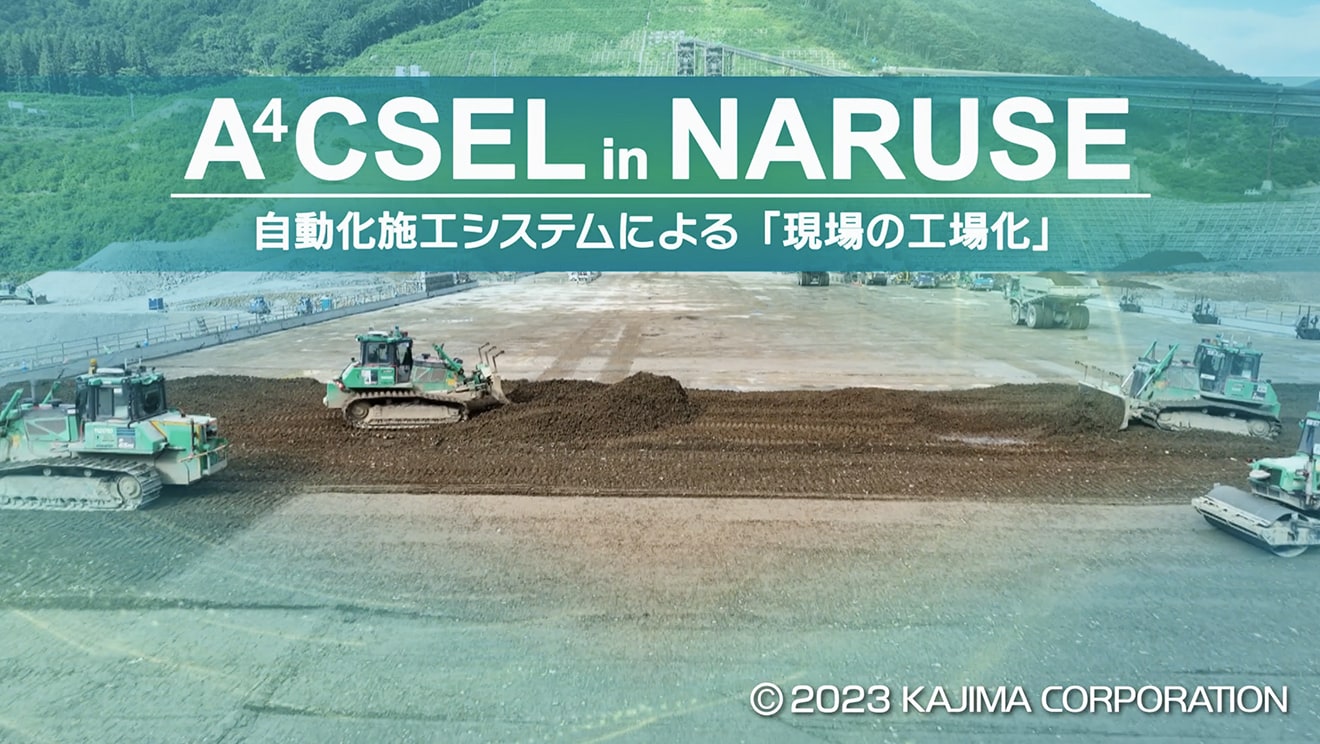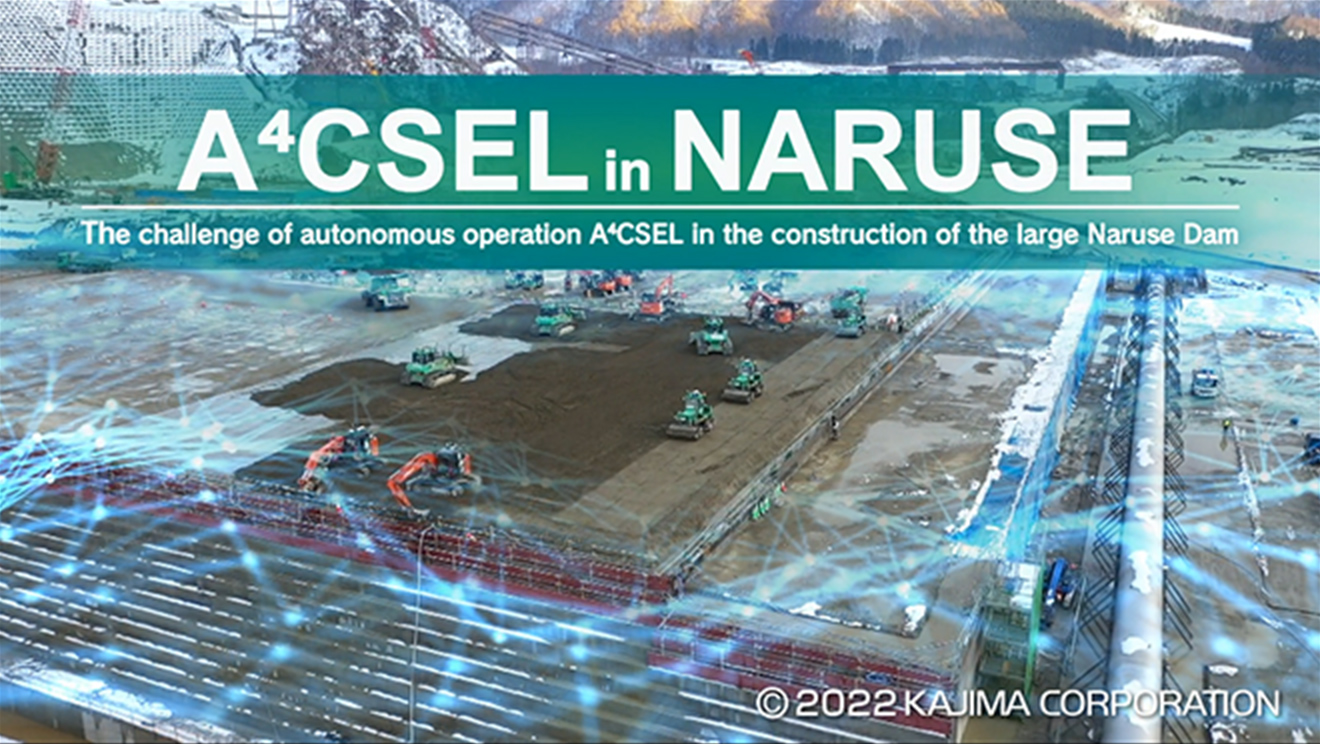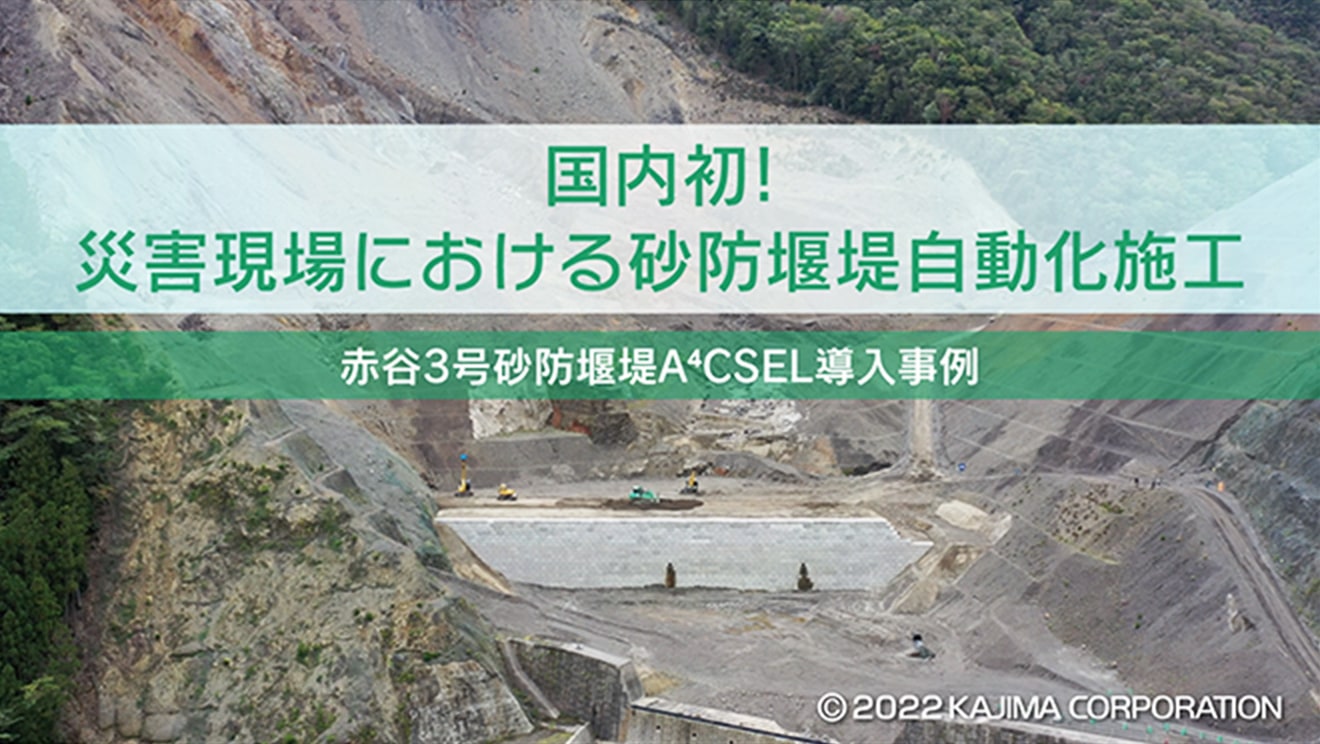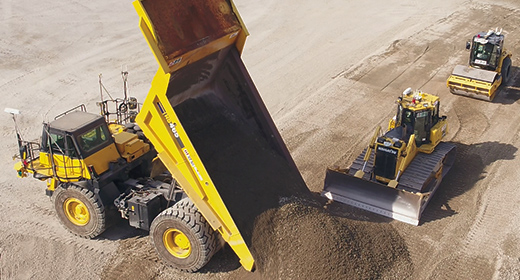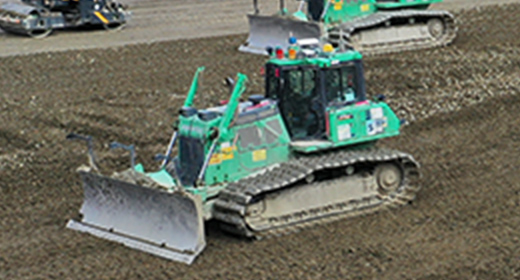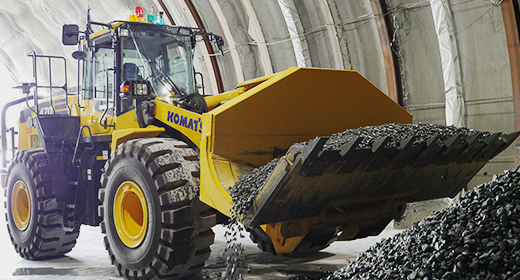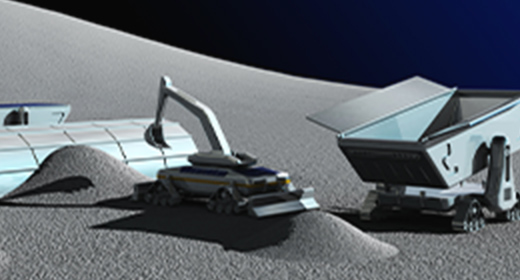A4CSEL for
Dam

Naruse Dam-
“Transforming the construction site into a factory” by A4CSEL
We have successively applied A4CSEL to automate vibratory rollers, bulldozers, and dump trucks onsite at several dam construction sites.
Starting in fiscal year 2020, the system is being applied to placing the CSG (cemented sand and gravel) embankment
of the Naruse Dam (near Higashinaruse village, Akita Prefecture).
More than ten automated construction machines worked around the clock to carry out the work.
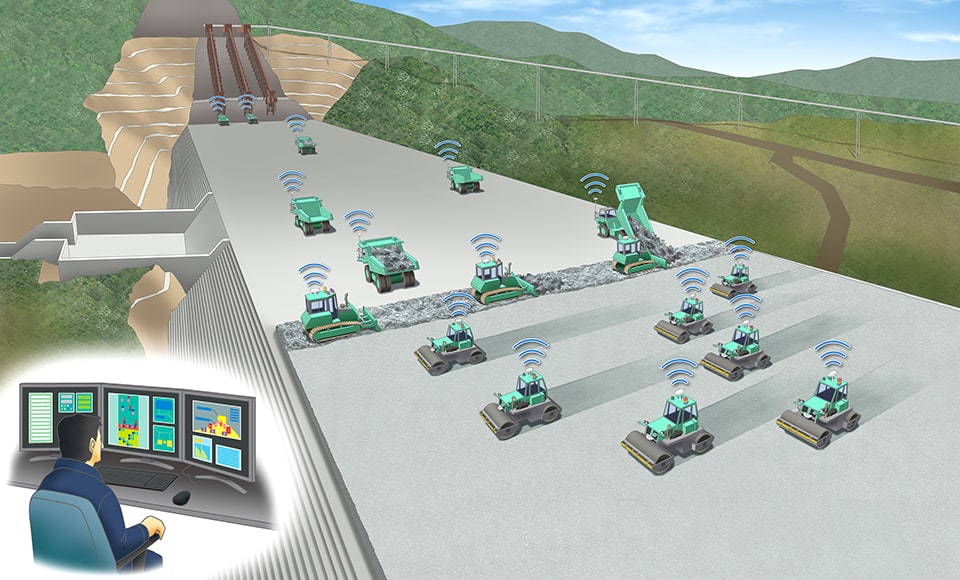
Illustration of A4CSEL in operation at Naruse Dam
Japan’s largest trapezoidal CSG dam—which can only be built by A4CSEL
Naruse Dam is Japan’s largest trapezoidal CSG dam with an embankment volume of 4.85 million m3. Due to heavy snowfall in the region, the embankment cannot be cast during the winter. Accordingly, the construction must progress at a rate of 250,000 to 300,000 m3 of embankment per month.
CSG placing of the embankment by applying A4CSEL started in May 2020. In May 2022, we placed approximately twice the previous maximum monthly volume of concrete and, in doing so, broke the previous Japanese record (which stood for 62 years).
In fiscal year 2023, we succeeded in automatically supplying CSG directly from the manufacturing plant to the embankment via a long-distance conveyor belt and SP-TOM (special pipe transportation method). By automating the entire process from manufacturing to placing, we have realized “Transforming the construction site into a factory.”
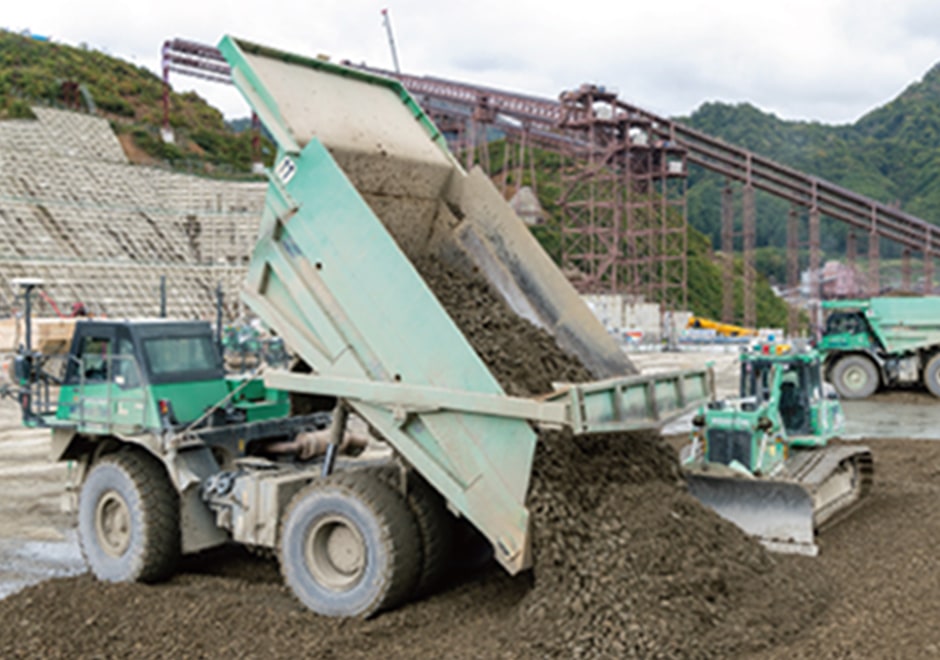
Automated bulldozer waiting while dump truck unloads CSG
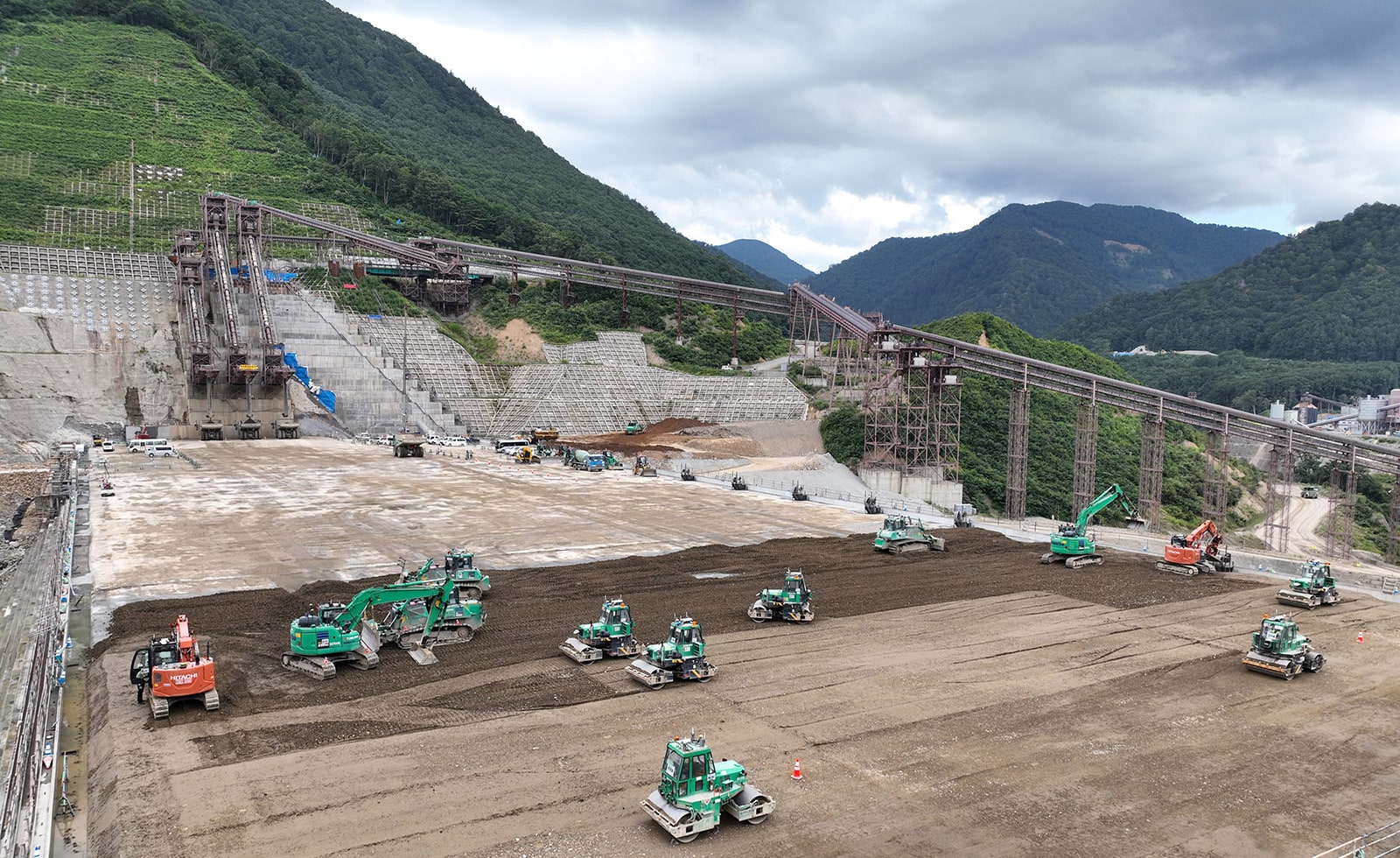
Naruse Dam, where everything from manufacturing to placing of CSG is automated in a manner that “Transforms the construction site into a factory.”
Automated construction machinery
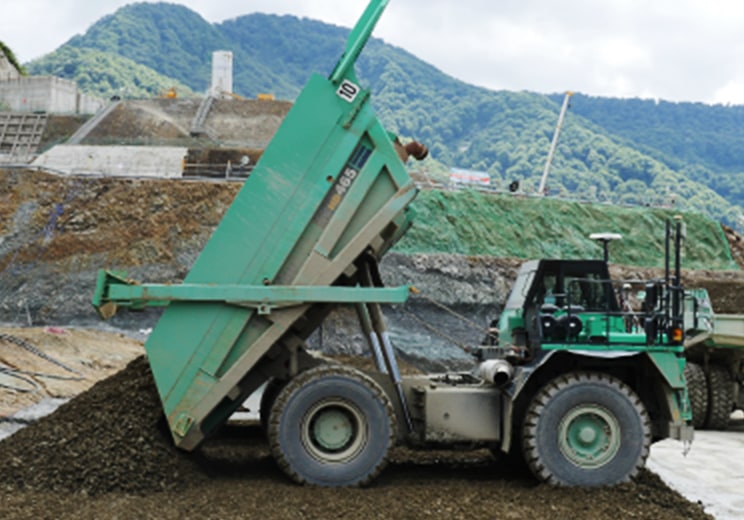
Automated dump truck
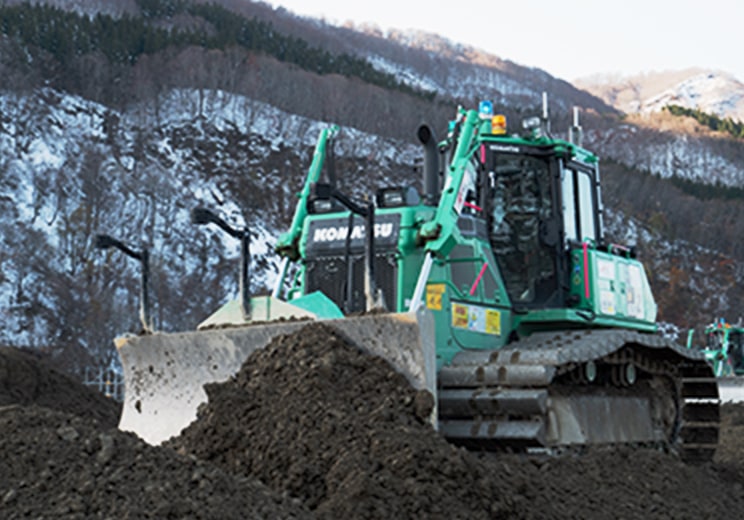
Automated bulldozer
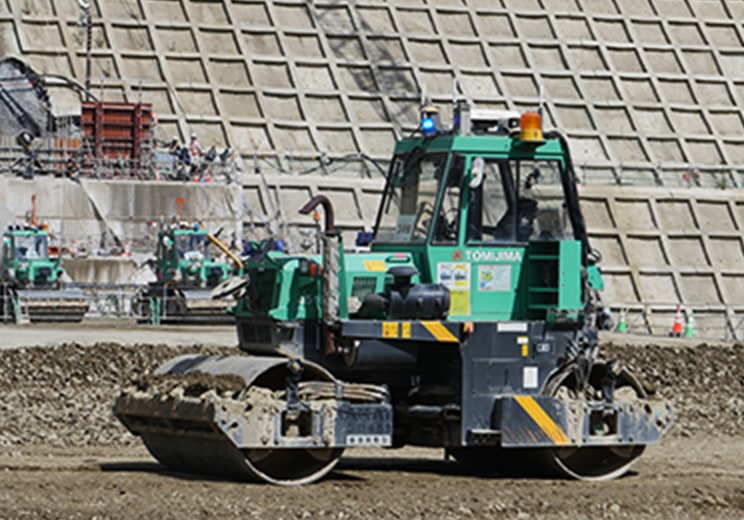
Automated vibrating roller
Three “IT pilots” monitor the construction from a control room 400 km away.
The automated construction equipment at Naruse Dam is controlled by three “IT pilots” from Kajima Seisho Experimental Field (Odawara City, Kanagawa Prefecture), which is 400 km from the dam. By transmitting work data from the control room to the automated construction machinery at Naruse Dam according to an optimized plan, it is possible to control multiple automated construction machines in unison so that they place the CSG embankment. The IT pilots monitor the automated construction equipment in operation and prepare construction plans based on daily changing construction conditions.
The automated construction machinery works on the embankment, day and night, except for refueling times, and at its peak, the construction work continues for 70 hours over three days and nights. Moreover, nobody can enter the automated construction area, so accidents involving contact between people and construction equipment are eliminated, thereby improving site safety.
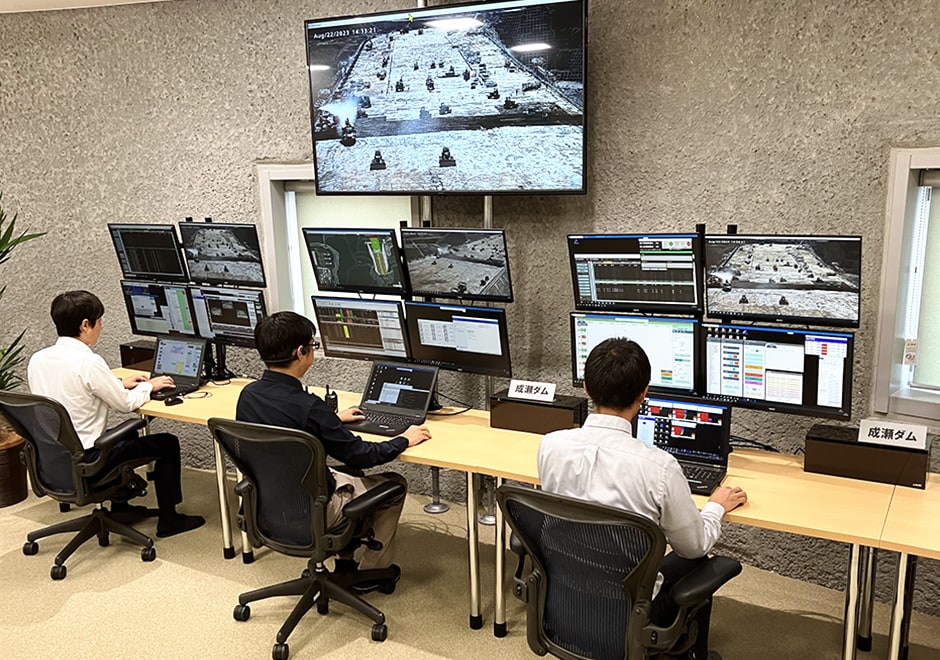
Control Room at Seisho Experimental Field
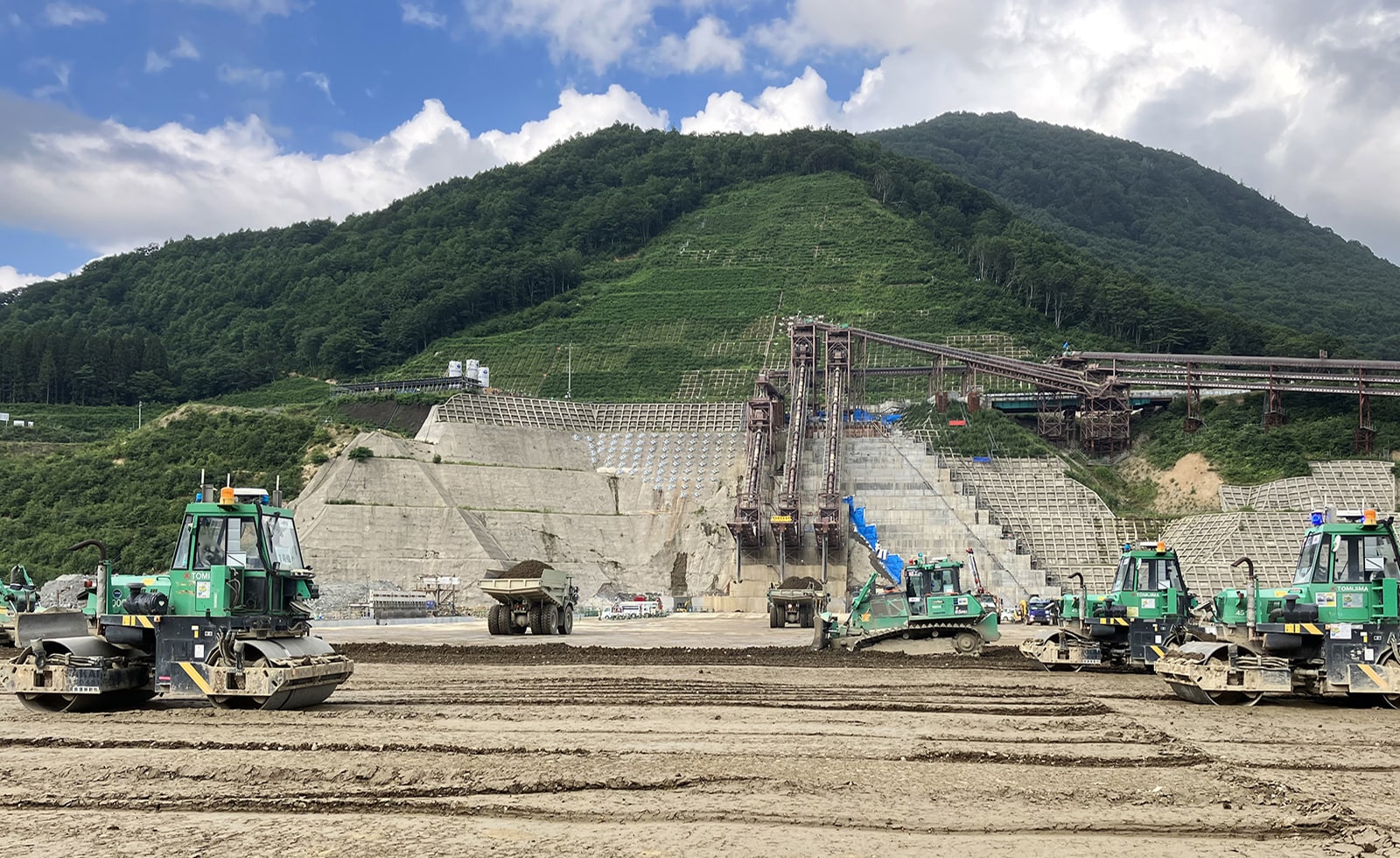
More than ten construction machines work together to place concrete at the embankment of Naruse Dam
A4CSEL demonstrates the effect of reducing CO2
As an efficient construction and production system, A4CSEL dramatically improves safety and productivity, and its high-productivity autonomous driving has been confirmed to be significantly more effective in reducing CO2 emissions during construction than manned operation.
As for the autonomous driving, the automated construction machinery operates according to work plans optimized using AI techniques and simulations. This optimal operation enables each autonomous bulldozer to do its work spreading earth with fewer movements than those performed by a manned operation. As a result, work time is reduced, and productivity is improved. What’s more, thanks to its efficient and optimal movements, each autonomous bulldozer travels a shorter distance (i.e., one-fourth of that travelled by a manned bulldozer), and it was demonstrated that fuel consumption per cubic meter of earth-spreading work could therefore be reduced by approximately 40 to 50%.
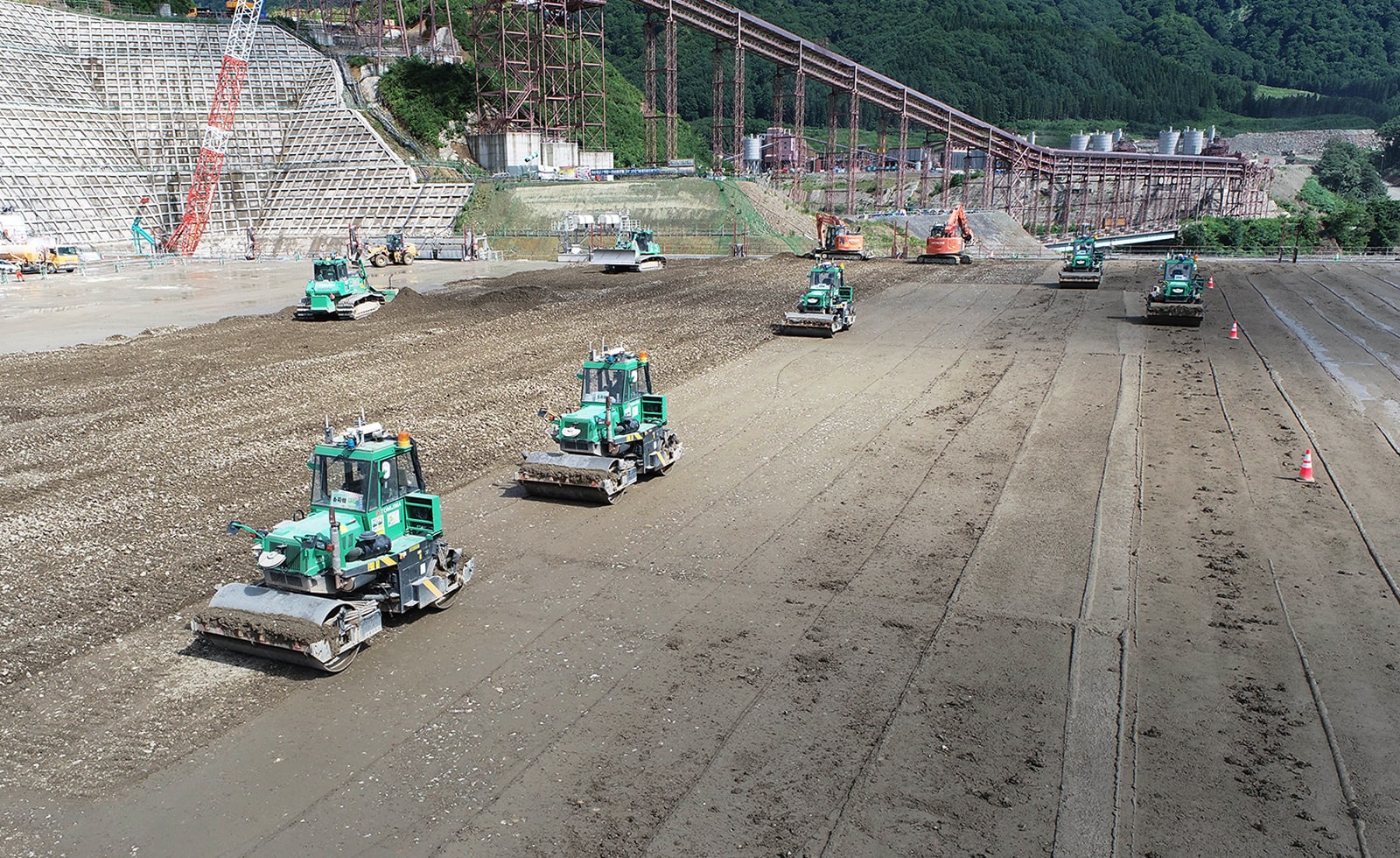
Automatic vibrating roller for accurate and reliable compaction
ColumnThe first in Japan to introduce automated construction adopting
A4CSEL and other equipment at erosion control work
In September 2011, record-breaking rainfall from Typhoon No. 12 (“Talas”) caused a number of large-scale landslides in the Kii Peninsula. In particular, in the Akadani district of Nara Prefecture, the sediment from a collapsed slope blocked a river, which posed a major threat to the downstream areas. Kajima has been in charge of restoration work since immediately after this disaster occurred. The No. 3 Erosion Control Weir, directly below the collapsed slope, which is the construction area for this project, is being constructed in a dangerous area where human access is restricted during the rainy season. Considering those circumstances, Kajima has applied A4CSEL for constructing the weir. The construction work was performed safely with the same or higher efficiency than that of manned construction, and it was also coordinated with other unmanned construction by remote control to ensure safety.
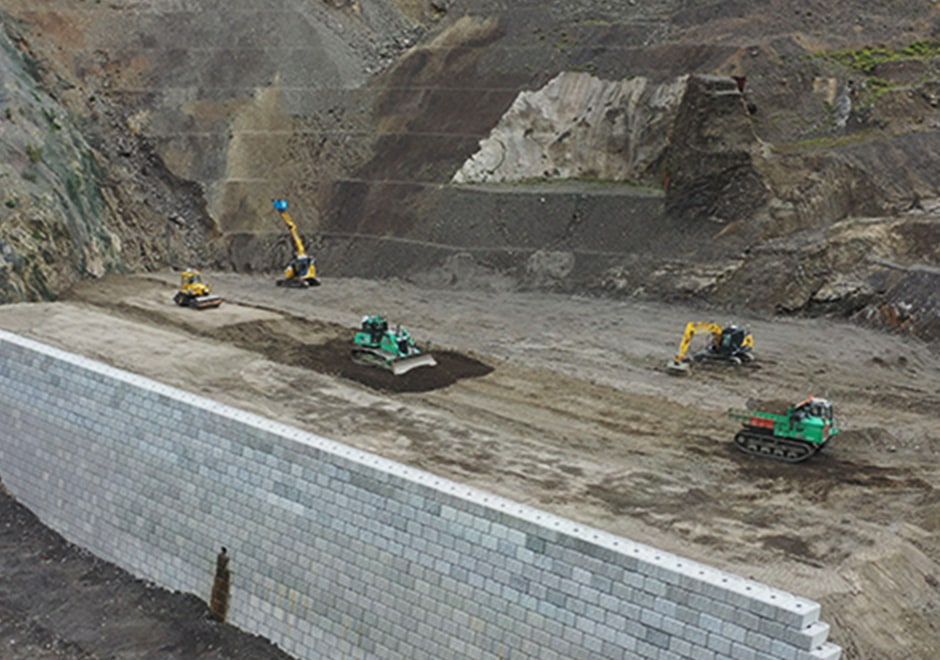
Construction of No. 3 Erosion Control Weir in Akadani district
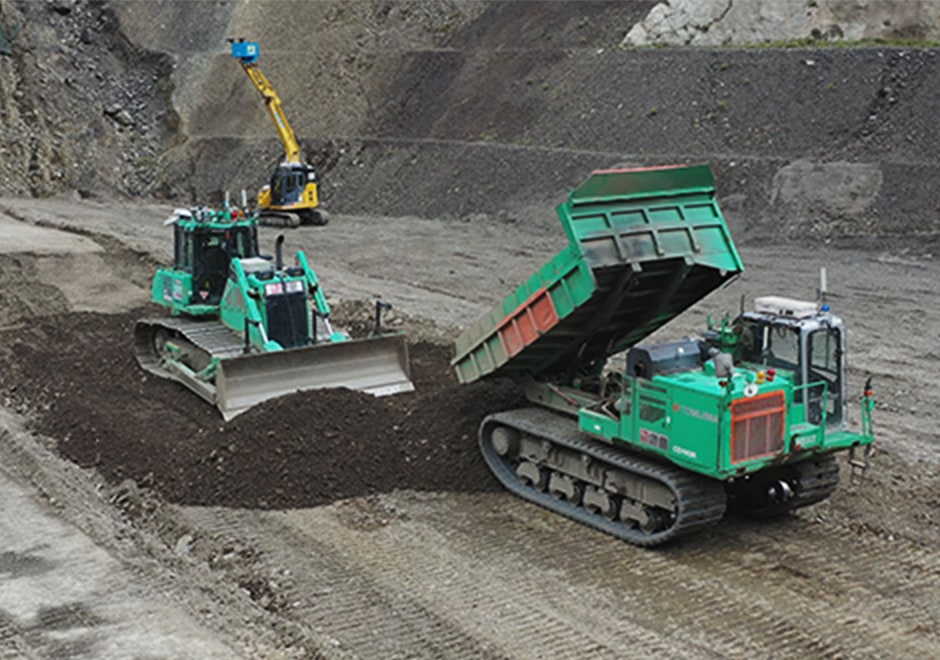
Automatic bulldozer in operation in Akadani district
